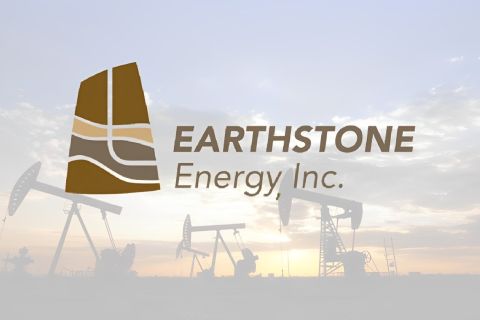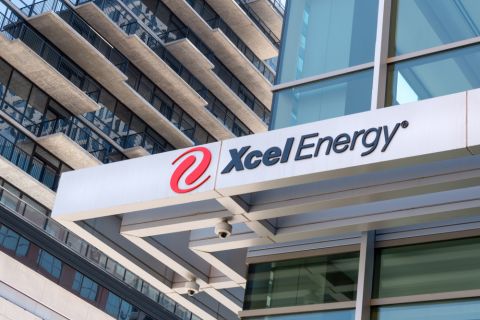Shell Egypt's multi-well program will target its North East Mediterranean (Nemed) deepwater concession. In 2004, during its last drilling campaign on Nemed, Shell made two discoveries. The upcoming drilling will try to establish the commerciality of these discoveries, and test some high-risk prospects. The shallow-water test will be drilled on its North West Damietta acreage.
Onshore, Shell is focused in the Western Desert. Through a joint venture with Badr El-Din Petroleum Co. (Bapetco), it will resume drilling in the West Sitra concession, where it recently completed a large 3-D seismic survey. It is also acquiring 3-D and planning an exploration program in its North East Abu El Gharadig extension.
Recently, the company farmed into two of Calgary-based Centurion Energy's concessions in the onshore Nile Delta region, West El Manzala and West El Qantara. The companies already have drilled a discovery at their Luzi-1 exploration well, on the eastern side of West Manzala. The 2,847-meter well flowed 9 million cubic feet of gas and 123 barrels of condensate per day from 35 meters of net pay in the Lower Abu Madi formation.
1 Canada
Drilling and permitting has recently slowed in Canada's coalbed-methane (CBM) plays, due to early spring break-up and a wet June. Also, as gas prices have fallen from the spike that occurred after the 2005 hurricane season, many CBM budgets have been diverted to oil projects, reports research firm Wood Mackenzie. The international consulting firm expects CBM production growth will mitigate declines from the Western Canada Sedimentary Basin in the near term. Canada's CBM production will grow from 300 million cu. ft. per day in 2005 to 1.2 billion cu. ft. per day in 2010, and to 2 billion per day by 2020, the company projects.
2 Trindad & Tobago
Operator BG Group and partner Chevron started first gas production from their Dolphin Deep Field off the southeastern coast of Trinidad. The field is 83 kilometers offshore in the East Coast Marine Area. BG will produce 250 million cu. ft. of gas a day from the two Dolphin Deep wells and deliver it to the Atlantic liquefied natural gas (LNG) plant on the country's southwestern coast by pipeline. This is the first subsea development in Trinidad & Tobago. BG also operates Dolphin Field, which started producing in 1996 and supplies 275 million cu, ft. of gas per day to the LNG facility.
3 Brazil
The Santos Basin rewarded Petrobras with a light-oil discovery in 2,140 meters of water on BM-S-11 Block. Partners in the block are BG Group and Petrogal of Portugal. Petrobras says its 1-BRSA-369A-RJS (1-RJS-628A) well is in a new exploratory frontier in the basin and is the first to be drilled through a 2,000-meter salt layer. The wellsite is about 250 kilometers off the southern coast of Rio de Janeiro.
4 Peru
BPZ Energy, Houston, is moving toward production on its Corvina platform off the northwestern coast of Peru. The company has mobilized a drilling rig to the CX-11 platform and completed the refurbishing of the platform to handle production. It plans to spud the first well on the platform within a month of installation. The field, which is on Block Z-1 and contains 3 trillion cu. ft. of proved, possible and probable reserves, will supply gas for a planned 160-megawatt power plant and will move gas into an existing pipeline to Ecuador.
In other activity, Perupetro approved the company's work proposal for the 248,000-acre Block XXIII onshore northwestern Peru, adjacent to Block Z-1 and Block XIX. BPZ is going through the qualification procedure and anticipates negotiating contract terms before year-end.
5 Ireland
Island Oil & Gas Plc found and confirmed the first natural gas in the Celtic Sea southeast of Ireland with its 49/23-1 discovery at Old Head of Kinsale. Logs showed a gross 30-meter gas column in Lower Cretaceous. Early information shows the field covers a 22-sq.-kilometer area with 90- to 120 billion cu. ft. of gas in place. The discovery is 25 kilometers from Marathon Oil's Kinsale Field Alpha production platform, and Island could tie the discovery back to that platform. Dublin-based Island drilled the well in 90 meters of water to a depth of 1,260 meters.
6 U.K.
Calgary-based Nexen Inc. and Bow Valley Energy received the go-ahead from the U.K. government for development of their Ettrick Field in blocks 20/2a and 20/3a in the Outer Moray Firth in the North Sea. The companies plan first oil in the first quarter of 2008 with a peak rate of 20,000 bbl. per day and associated gas. Seven wells have been drilled on the 1981 discovery, and Nexen will first bring on three producing wells and one water injector. The second phase will add injection wells. Production will be tied to a leased floating production, storage and offloading vessel.
7 Norway
Statoil will use subsea compression as it extends the production life of the Asgard complex in the Norwegian Sea. This would be the first commercial use of the technology, although a couple of pilot projects are being conducted. The compressor would provide artificial lift to replace falling reservoir pressure and increase production by an estimated 25%. That's the equivalent of another 1.06- to 1.41 trillion cu. ft. of additional gas. Statoil wants to bring the technology online in 2012 or 2013. The company says subsea compression also could be applicable for Troll and Snohvit fields.
8 Tunisia
Dallas independent Pioneer Natural Resources will step up its exploration campaign in Tunisia. Before year-end, the company is planning to drill two wells on its operated Jenein Nord Block and one well on Borj El Khadra Block. Pioneer is also continuing to drill development wells on the Adam find in Borj El Khadra. Production from Adam-4 has begun and Adam-5 was spudded in July.
9 Egypt
Ivanhoe Energy Inc., Vancouver, has presented Egyptian authorities with a feasibility study and three commercial proposals for a gas-to-liquids (GTL) plant. The Canadian firm previously signed a memorandum of understanding with Egyptian Natural Gas Holding Co. (Egas) and the latter has agreed to commit up to 4.2 trillion cu. ft. of natural gas, or approximately 600 million cu. ft. per day, for the expected 20-year operating life of the proposed project. Egas is now prepared to choose the preferred proposal, which could lead to negotiations for development of a project. Ivanhoe Energy holds a master unlimited-volume license for the proprietary GTL technology owned by Syntroleum Corp. The latter, based in Tulsa, is looking to use the technology on a barge offshore Aje Field in Nigeria.
10 Mauritania
Disappointing news continues to flow from Mauritania-this time from the latest deepwater exploration wells. Woodside Petroleum's Colin-1 well has been drilled to a total depth of 2,322 meters. Despite a thick and well-developed reservoir section, analysis of drilling data and wireline logs indicates the well did not encounter any significant hydrocarbons. It will be plugged and abandoned.
The rig will then move to Dana Petroleum's Block 8 to drill exploration well Flamant-1. This targets a large gas prospect Gaz de France and BG are hoping will prove adequate gas reserves for a liquefied natural gas plant in the country. Later in the drilling sequence, the rig will return to Woodside's production-sharing contract Area A to drill the Kibaro-1 prospect.
11 UAE
Indago Petroleum signed a new concession agreement with United Arab Emirates for the upgrade of offshore Saleh gas field. The company will work with state-owned Ras Al-Khaimah Gas Commission (Rakgas) to increase the field's production. Salah, which lies 42 kilometers off Ras Al Khaimah, has been producing since 1984 but peaked at 70 million cu. ft. of gas and 13,000 bbl. of condensate per day in 1986 and has since declined to a mere 100 bbl. per day due to pressure depletion and encroaching water. The U.K. firm will carry out a field study, including the processing of existing 3-D seismic.
12 Malaysia
Shell and partner Malaysia's Petronas have produced first gas from E8 Field offshore Sarawak. E8 is part of Shell's E11 hub integrated gas project, and first gas is a big step forward. Under the hub integration project, gas production from surrounding fields is channeled to the E11 complex for processing before being transported via pipeline to Petronas' liquefied natural gas (LNG) complex at Bintulu. E8 is one of five fields being developed to provide continued supply to the LNG complex; the other four fields are E11, F23, F6 and F13. The F13 West and F13 East satellite gas developments are expected to come into production in the next three years, when the E11 complex will reach peak capacity. Shell and Petronas each hold 50% of the E11 hub development, and Shell operates.
13 Australia
Testing on the Gnu-1 exploration/appraisal well in Reindeer/Caribou Field offshore Western Australia has boosted reserves in the field to 500 billion cu. ft. of gas, says Houston-based operator Apache Corp. The Gnu prospect, in WA 209P permit in 61 meters of water, flowed 26 million cu. ft. of gas and 61 bbl. of condensate per day from perforations in the North Rankin formation between 3,432-40 meters measured depth. The Gnu-1 well also logged 115 meters of net pay in the Legendre formation, uphole from the North Rankin reservoir. Apache operates the well with a 55% stake, while Santos Ltd. holds 45%
Recommended Reading
Earthstone’s Anderson Relaunches, Seeks Conventional
2024-05-24 - The new E&P PetroPeak Energy will also take a look at unconventional property in the Eagle Ford and Austin Chalk.
Dividends Declared Week of May 20, 2024
2024-05-24 - Here is a selection of upstream and service and supply company dividends declared in the past week.
Randolph Bell Joins JERA Americas as VP of Government, Regulatory Affairs
2024-05-22 - Randolph Bell will lead government engagement teams for JERA Americas at the local, state and federal level while focusing on energy markets.
Berntsen Joins Xcel as Executive VP, Chief Legal and Compliance Officer
2024-05-22 - Rob Berntsen is assuming the role from Amanda Rome, who had been in the position on an interim basis.
Riley Permian Increases Stake in West Texas Power JV with Conduit
2024-05-22 - Riley Exploration Permian increased its ownership in RPC Power, a JV with Conduit Power, to 50% from 35% and has agreed to sell up to 10 MMcf/d of natural gas as feedstock supply for the generation facilities as RPC plans to sell to ERCOT.





